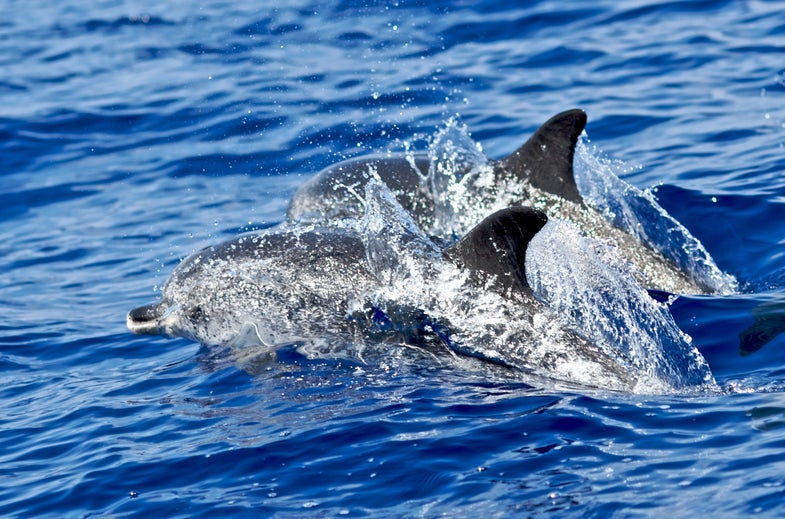When NASA Paid Researchers To Learn To Talk To Dolphins
Plus, the strange relationship one researcher developed while living with a dolphin for six months

In 1965, as a part of a NASA-funded project, a woman lived for six months in rooms flooded with a few feet of seawater. For a roommate, she had an adolescent male dolphin.
The project is now old history, but it’s received a bit of renewed attention lately in the British media. A new documentary about the project, called The Girl Who Talked to Dolphins, premiered at the Sheffield International Documentary Festival June 11. The documentary will play again on BBC4 on June 17. On June 7, The Observer published a long feature on the story.
There’s one detail about the project that’s notorious. The woman involved, Margaret Howe Lovatt, lived with Peter the dolphin to get to know him in-depth and to try to teach him to talk to her. Eventually, she began taking care of his frequent sexual urges manually, so that they wouldn’t disrupt his language lessons. In a clip BBC published on YouTube, Lovatt, now 97, explains:

I don’t even know what to say now. I will say this: As strange as this is, there is actually plenty about the lab where Lovatt worked that is nearly as strange. NASA’s rationale for partially funding the lab is just one of those head-scratchers. The space agency thought that dolphin-communications research might help people discover techniques for talking with aliens, should the need arise one day. Dolphins are intelligent, social creatures that live in a totally different environment and have a totally different language. Sounds just like aliens, right?
I must give you some warnings about the end to this story. It’s tragic. The lab violated good animal-welfare practices in several ways. And research into teaching dolphins to talk to people never got very far.